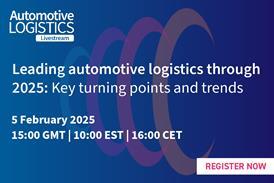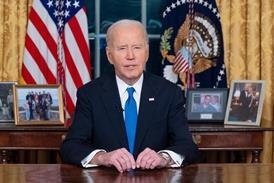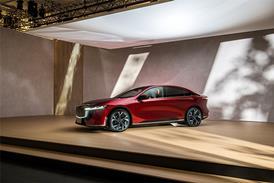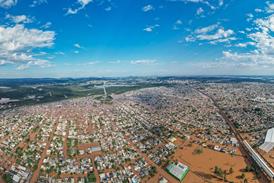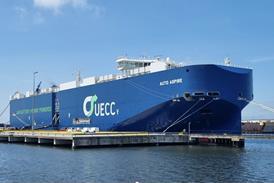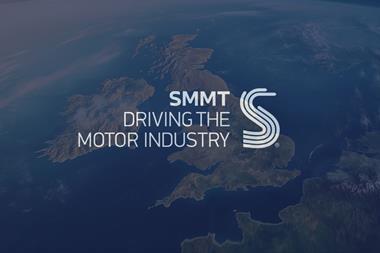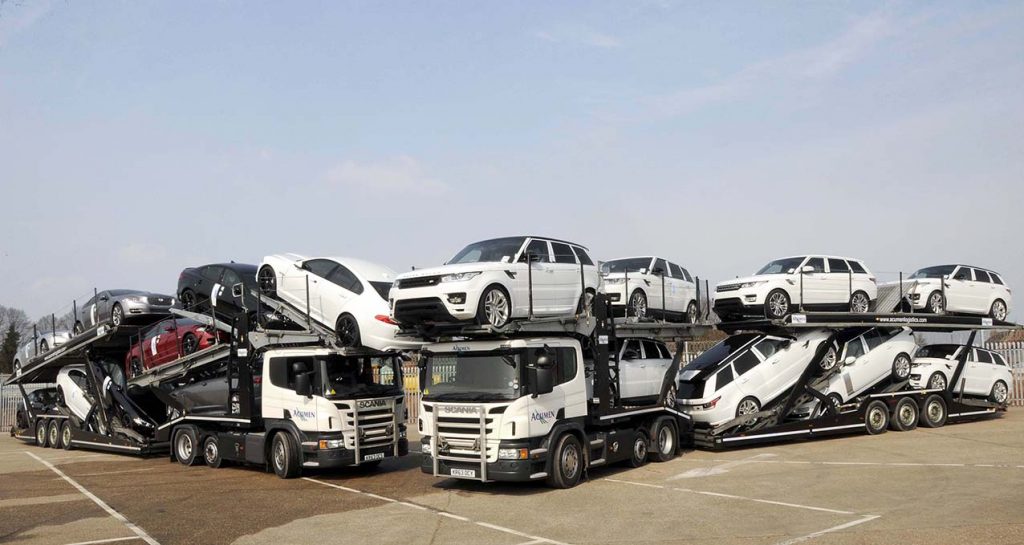 Jaguar Land Rover has taken a lead in using in-vehicle technology and connectivity to improve outbound visibility, part of a recent programme of change and investment across the carmaker’s logistics[sta_anchor id="1"]
Jaguar Land Rover has taken a lead in using in-vehicle technology and connectivity to improve outbound visibility, part of a recent programme of change and investment across the carmaker’s logistics[sta_anchor id="1"]
Jaguar and Land Rover cars and SUVs are, by mandate of their brands, powerful and highly engineered creatures. Today, that is not just evident by the speed and prowess of Jaguar models, or the luxurious girth of a Range Rover; the vehicles are also as high-tech as they are dominating beasts of the road.
A Jaguar XE or Discovery Sport owner can, for example, open an app on her phone and virtually sit at the dashboard of the car, using her screen to check current location, mileage and past trips; regulate interior temperature; and verify that the car’s door and windows are locked. When the driver does get behind the wheel, sensors and driver-assist technology increasingly help her to park automatically, to stay in lanes or to react to potential dangers in the road.
That a vehicle is secure and ultra-modern, however, is no guarantee that it moves in the most up-to-day outbound logistics chain. As a sector, few would claim that vehicle logistics providers could match OEMs in technology; many vehicle logistics processes remain manual, while transport assets can be decades old and visibility and delivery predictability can still fall short of expectations. Finished vehicle transport is a different beast altogether.
- -Premium logistics
- -Advanced forecasting
- -Looking for supply chain improvement
- -Building in-house resources
- -Connected to an efficient future
- -Brexit unknown
Part of moving in this direction is a change in thinking and in perception of logistics more generally, including for finished vehicles. David Dyke, director of global material planning and logistics (MP&L), which is responsible for JLR’s supply chain management, is convinced that the broader logistics industry is in the midst of huge technological shifts that will also require executives and providers to engage with new processes, from data analytics to advanced automation.
“A lot of people still think about logistics in terms of lorries and boxes,” he says, “but increasingly it is about the control of huge data flows, and the more you can handle and understand that, the more efficiently you can deliver improvements across the supply chain.”
Planning the right time and place in advance[sta_anchor id="2"]For JLR, using more data and technology in logistics is not just a general aspiration – the company has made advances that, from what your correspondent can see, put it in the vanguard of vehicle tracking and distribution management. Jaguar Land Rover’s global vehicle distribution system, D42, for example, has end-to-end, order-to-delivery features, from vehicles queued in the production pipeline to live updates on current locations in transit globally. While much of that system still depends on a disciplined process of vehicle scanning and verification at key stages in the delivery chain, it is also pulling in real-time location and quality information – such as monitoring fuel levels, mileage, battery condition and tyre pressure – via the car’s in-vehicle telematics and communication.

Meanwhile, thanks to the carmaker’s global growth, which has included fast growing exports from the UK and new assembly in key regions, data management of both vehicle movements and network efficiency is increasingly important to JLR’s outbound logistics. That includes a strong focus on demand forecasting and predicting transport and arrival times – information that is used not just internally by the carmaker, but shared openly with logistics providers and customers.
“We put a lot of effort into our global forecasting, as we have to understand what our demand is six months ahead of any point in time, with a process that understands the flows from our plants globally, along with the potential risks and opportunities ahead of us,” says Dyke. “For logistics, that means working as an extended team with sales and marketing, purchasing, engineering and manufacturing to help us make the right decisions.”
The result is a system that creates accurate estimated times of arrival for each vehicle order – whether it is already built or in the production pipeline – which are then updated and communicated with any changes to providers and dealers. “All of our global challenges and supply chain complexity may be very interesting, but the customer doesn’t and shouldn’t care about that,” he says. “The customer only wants the right car in the right place at the right time, and that is our core responsibility.”
Right place, right time may be a token slogan in logistics, however it belies the careful monitoring, network planning and investment necessary to achieve it for JLR’s global vehicle flows. The carmaker has made important changes to its distribution system in terms of infrastructure and locations, as well as in the way it plans vehicle logistics internally with other departments and logistics providers. Critically, MP&L has aligned more of its planning with product engineers and research and development (R&D) so as to increase the potential use of new vehicle technology in logistics as well.
In the UK and Europe, meanwhile, it has recently brought vehicle logistics management and procurement in-house following many years of placing them in the hands of lead logistics providers (LLPs). Now, with JLR on the verge of building cars in mainland Europe for the first time, the carmaker’s MP&L division is building up valuable knowledge and resources across the continent.
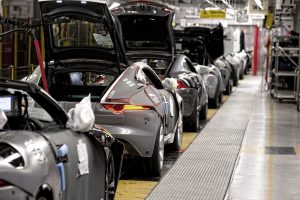 JLR has invested heavily across its production base, including its three UK assembly plants, as well as new plants in China, Brazil and upcoming in Slovakia
JLR has invested heavily across its production base, including its three UK assembly plants, as well as new plants in China, Brazil and upcoming in SlovakiaAiming for velocity[sta_anchor id="3"]Jaguar Land Rover’s global growth continues into its seventh year. The Tata Motors-owned carmaker has seen its sale treble since 2009 – reaching 521,500 retail units in the financial year ending in March 2016 – and has increased its output not only across the UK, but has started or opened assembly locations in Pune, India; Changshu, close to Shanghai, in China; and, most recently, Itatiaia, near Rio de Janeiro, Brazil.
Next year, JLR will build a vehicle at the Magna Steyr contract assembly plant in Graz, Austria; and this summer it started building a new £1 billion ($1.32 billion) plant in Nitra, Slovakia set to open in 2018 with capacity for 150,000 units.
Even before new production comes on-stream, the carmaker’s vehicle logistics flows have been growing in complexity, with MP&L responsible for moving around 3,000 vehicles per day; its three UK plants serve up to 150 different countries while vehicles travel collectively a combined 2.6 billion miles each year to customers.
JLR has also developed from serving sales markets heavily weighted towards the UK and US, to having a relative balance across five principal regions: mainland Europe; the UK; the US and North America; China; and in combined overseas markets (which stretch from Brazil to South Korea).
Gobal sales in the first eight months of 2016 were nearly 373,000 units, up 24% compared to the same period last year. The growth comes despite fits and start in China (which could become the carmaker’s largest global market this year after a drop last year), while it is also holding up well in the UK and Europe so far, despite the uncertainty unleashed by Britain’s referendum decision in June to leave the European Union.
Managing this growth has required a careful focus on the carmaker’s outbound network, from determining ports of entry to redesigning yards. In the UK, for example, JLR has recently added a new, bespoke vehicle dispatch yard within its Solihull plant, outside Birmingham. But even that on its own isn’t enough capacity in the region, and the carmaker also added a storage facility near Birmingham that can hold vehicles for UK dealerships from its three British plants.
 "A lot of people still think about logistics in terms of lorries and boxes, but increasingly it is about the control of huge data flows, and the more you can handle and understand that, the more efficiently you can deliver improvements across the supply chain." - David Dyke, Jaguar Land Rover
"A lot of people still think about logistics in terms of lorries and boxes, but increasingly it is about the control of huge data flows, and the more you can handle and understand that, the more efficiently you can deliver improvements across the supply chain." - David Dyke, Jaguar Land Rover
JLR has also improved its use of rail transport in the UK, which now accounts for around 30% of its outbound transport in the country (the rest moves by road). According to global vehicle distribution manager Gareth Williams, the carmaker has recently worked with vehicle rail service provider STVA and the UK’s national rail infrastructure company, Network Rail, to extend the length of its rail loading facilities and to increase train sizes for finished vehicles.
Globally, the carmaker’s new plants in China and Brazil include state-of-the-art vehicle yards, which were designed by MP&L together with local teams.Now, the carmaker is reviewing its total logistics network again as part of a comprehensive transformation programme across MP&L that is looking across the supply chain for improvements, including benchmarking and site infrastructure changes.
Plans for new plants and distribution are also being shared carefully with the carmaker’s outbound logistics service and infrastructure providers. According to Dyke, details are shared up to five years in advance to allow companies time to invest and plan their own strategy, as well as to advise JLR.
“There is no point in just ramping up and giving providers 12 months notice,” he says. “Providers need to invest heavily. Ports also have to invest in road and terminal facilities.”
Dyke points to the port of Southampton, on England’s southern coast, which is the carmaker’s largest port for deep-sea exports. “We have to give ports like Southampton a long-term volume forecast, so they can build up the infrastructure needed for it. Otherwise, our cars simply won’t get off this island.”
The carmaker has begun studying new inbound and outbound potential for its coming production in central Europe, for which details are still to be confirmed. However, Dyke points to the opportunities in serving JLR’s customer base in Europe, which has seen strong growth this year. Having production on the continent, meanwhile, will increase JLR’s opportunities to arrange return transport loads between its UK and European plants.
Taking it back home[sta_anchor id="4"]Partly to take better advantage of its own increasing scale and volume, Jaguar Land Rover has beefed up its internal management resources for vehicle logistics in Europe. Following the sale to Tata, JLR had still relied on Ford to procure its UK vehicle transport, including the use of Ford UK’s in-house trucking fleet and its jetty in Dagenham, at the port of London. Meanwhile, across the European continent, JLR had outsourced outbound logistics management, including short-sea and road delivery, to Volvo Group Logistics Services (VGLS, formerly Volvo Logistics), part of the commercial vehicle manufacturer. VGLS had also been the LLP for separately owned Volvo Cars, until the Swedish carmaker brought logistics back in-house starting in 2012.
In short, JLR had still been operating a significant part of its outbound logistics under a similar structure to that of the erstwhile Premier Automotive Group – which included Jaguar, Land Rover, Aston Martin and Volvo Cars under Ford ownership – from almost a decade ago.
 "We examine [possible roles for LLPs] on a regular basis across individual plants, markets and trade lanes. We’re open, we just haven’t pushed that button for the time being"- Gareth Williams, Jaguar Land Rover
"We examine [possible roles for LLPs] on a regular basis across individual plants, markets and trade lanes. We’re open, we just haven’t pushed that button for the time being"- Gareth Williams, Jaguar Land Rover
Now, with its distribution flows so changed, Dyke and Williams suggest that it was time for JLR to take control of its carrier and network sourcing and management.“We had a fantastic relationship with Ford and with Volvo, but we were no longer one company, which made it incumbent upon each of us to do what was right for our companies,” says Dyke. “We still work with Ford and Volvo where it makes sense, but we also now are working with other OEMs where we can to share yards, capacity and backhauls.”
In taking this management in-house, which includes running its own tenders across the UK and Europe, and selecting its own network and consolidation points, JLR had to grow its management team internally in the vehicle distribution area under Williams, as well as in purchasing. “It has been one of the best things we’ve done,” says Dyke. “This function has been developed in-house and given us a better understanding of the network, better control and helped us to improve our processes overall.”Building up internal resources for managing outbound logistics across Europe looks set to be particularly important ahead of production and sales growth there. For example, the carmaker is currently in the midst of an important tender for vehicle logistics across mainland Europe.
“Taking vehicle logistics management back in-house in the UK and Europe has paved the way for our expansion in Europe, and we will have the networks, knowledge and connections with the carrier base to understand the opportunities we will have,” says Gareth Williams.
JLR isn’t currently using any LLPs for its global vehicle distribution, either. Deep-sea shipping is procured and managed centrally in the UK, while regional distribution is led by national sales organisations, such as in the US or Brazil, but in close collaboration and governance from global MP&L. In China, the carmaker now has a mixed model between its national sales arm responsible for selling imports, while the Chery Jaguar Land Rover joint venture is responsible for China-built vehicles – although both are working together.
Gareth Williams points out, however, that just because LLPs do not fit into the carmaker’s outbound logistics today doesn’t mean that the door to such services is closed.“We examine it on a regular basis across individual plants, markets and trade lanes,” he says. “We’re open, we just haven’t pushed that button for the time being.”
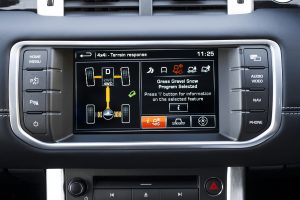 Connecting to a new future of logistics[sta_anchor id="5"]While JLR has looked to its network and external partners to improve its vehicle distribution, it has also benefitted from working more closely across the company’s internal departments. Dyke points to a strengthening of MP&L’s role in plant and model location decisions, including encouraging more considerations for vehicle handling and distribution.
Connecting to a new future of logistics[sta_anchor id="5"]While JLR has looked to its network and external partners to improve its vehicle distribution, it has also benefitted from working more closely across the company’s internal departments. Dyke points to a strengthening of MP&L’s role in plant and model location decisions, including encouraging more considerations for vehicle handling and distribution.
For example, Dyke and Williams walked the length and breadth of the Changshu site in China up to a year before the plant and joint venture details had been finalised, in part to start designing the vehicle yard layout. The approach has been similar for Brazil and now is also the case for upcoming production in Austria and Slovakia.
The two also emphasise the importance of working in advance and in collaboration with other management functions to help improve overall logistics costs and performance. Dyke points to a company-wide programme, ‘Design for Logistics’, that aims to train engineers and product developers in understanding how their decisions can have a real impact (positive or negative) on logistics and total supply chain costs.
While a large part of this programme would focus on improving pack density and parts handling, there are also considerations for vehicle logistics, including size considerations for vehicle loading and handling.
In such efforts, MP&L got an early jump in educating its engineering department about the potential to use telematics and connected vehicle features. By integrating this information into the vehicle distribution process, Dyke and Williams point to increases in control and visibility globally of vehicles in real time from plant through to customer handover.
“The R&D team is obviously usually focused on how new technology in cars is used by customers, but by working closely with them from the start, we are able to influence their thought process and explore the potential for logistics,” says Williams. “In that way, ‘Design for Logistics’ is not just about component parts in transport and packaging.”
While others – including BMW, FCA and GM – are investigating the use of such technology for outbound logistics, JLR appears to be ahead of the game. When opening the interface to its D42 distribution system, users can not only track ETA and view different stages of a vehicle’s progress in the supply chain, but a ‘connected car’ tab displays location and status information for active vehicles by VIN number. There are security and privacy issues to work out, and communications systems are not equal everywhere, but JLR has already moved ahead with the project in many areas.
New car technology could go even further towards making JLR’s vehicle logistics more secure and advanced. Dyke points to the potential of autonomous driving for outbound logistics. Given that most damage and accidents are still the result of human error, damage rates and handling accuracy could be greatly improved in distribution yards and in transport. Dyke points to the potential for faster, safer loading of vehicles into trucks, trains, ro-ro vessels and even into containers.
“Driverless features make a lot of sense for the quality, delivery and movement of vehicles,” says Dyke. “Those are the next innovations that we’re keen to explore.”In other words, JLR is on its way to making vehicle logistics a more efficient, advanced beast for the supply chain.
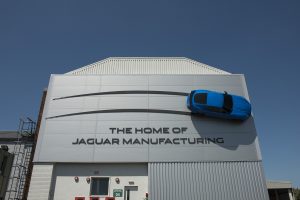 The UK referendum to leave the European Union this past June is a thorny topic for the European automotive industry. According to surveys by the Society of Motor Manufacturers and Traders, the UK’s national automotive body, 77% of members supported remaining in the club. That is partly because leaving the EU could eventually disrupt the way that the automotive supply chain has functioned between the UK and EU up to now.
The UK referendum to leave the European Union this past June is a thorny topic for the European automotive industry. According to surveys by the Society of Motor Manufacturers and Traders, the UK’s national automotive body, 77% of members supported remaining in the club. That is partly because leaving the EU could eventually disrupt the way that the automotive supply chain has functioned between the UK and EU up to now.
While the UK’s future relations with the EU are not yet clear, and may not be for many months or even several years once Britain formally starts exit negotiations, there are indications that the UK could leave or forfeit access to the European single market – an outcome that could indeed lead to thicker trade barriers to goods, capital, services and labour between Britain and its largest trade area.
Until then, however, it is ‘business as usual’ for JLR, as all existing agreements are in place. The fall in sterling that followed the referendum has provided something of a boost, although it is partly offset by the share of components JLR imports to the UK for production.
Amid the uncertainty, David Dyke and the MP&L department are not ready to discuss potential logistics implications or contingency measures beyond stressing that there are no plans to change or reverse current investment decisions in the UK or Europe. The company’s leadership has also made clear that it will work to make sure that the automotive industry is considered in exit negotiations.
Regardless of the outcome and potential changes, MP&L’s input on such considerations will be important, given the significance of export and trade with Europe to JLR; the EU currently accounts for more than 20% of the carmaker’s global sales and a large share of its supply base. It is doubtful that more trade barriers would be welcome, although JLR’s logistics experts have certainly learned how to work around them across the 150 global markets they currently serve.


